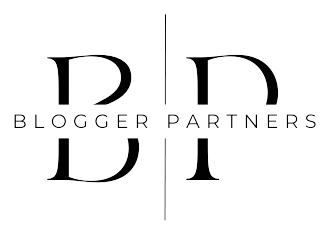In the rapidly evolving landscape of technology, the Internet of Things (IoT) has emerged as a transformative force, revolutionizing the way we interact with the world around us. From smart homes to industrial automation, IoT applications have become ubiquitous, offering unprecedented levels of connectivity and data-driven insights. However, amidst the promise of IoT lies the challenge of development costs, which can often spiral out of control if not managed effectively. In this article, we delve into strategies for maximizing Return on Investment (ROI) through cost-effective IoT app development services.
Understanding the Significance of IoT App Development
Before delving into strategies for cost-effectiveness, it’s crucial to grasp the significance of IoT app development services. IoT applications empower businesses and individuals to gather, analyze, and act upon data from interconnected devices. These applications span various domains, including healthcare, manufacturing, agriculture, and smart cities, among others.
The development of IoT applications involves intricate processes, including hardware integration, software development, data analytics, and user interface design. As such, it often requires substantial investments in terms of time, resources, and expertise. However, the potential benefits of IoT, such as enhanced operational efficiency, improved decision-making, and new revenue streams, justify these investments.
Key Challenges in IoT App Development
While the benefits of IoT applications are undeniable, several challenges hinder their development, particularly concerning cost-effectiveness:
- Complexity: IoT systems are inherently complex, involving a multitude of interconnected devices, protocols, and data streams. Managing this complexity requires specialized skills and resources, which can escalate development costs.
- Security Concerns: Ensuring the security and privacy of IoT data is paramount. Implementing robust security measures adds to the development overhead, contributing to higher costs.
- Scalability: IoT applications must be designed to scale effortlessly as the number of connected devices and data volumes grow. Building scalable architectures necessitates careful planning and investment, impacting development budgets.
- Hardware Costs: Integrating IoT devices into existing infrastructure entails procurement and deployment costs. Additionally, ensuring compatibility and interoperability with diverse hardware components adds to the development expenses.
Strategies for Cost-Effective IoT App Development
To maximize ROI in IoT app development, organizations can adopt several strategies aimed at optimizing costs without compromising on quality and functionality. These strategies encompass various aspects of the development lifecycle, from planning and design to deployment and maintenance:
1. Clear Requirements Definition
Begin the development process by clearly defining project requirements and objectives. Conduct comprehensive stakeholder consultations to identify key functionalities, user expectations, and performance metrics. A well-defined scope minimizes the risk of scope creep and prevents unnecessary rework, thereby reducing development costs.
2. Agile Development Methodology
Embrace agile development methodologies, such as Scrum or Kanban, to iteratively build and refine IoT applications. Agile methodologies promote flexibility, collaboration, and incremental delivery, allowing teams to adapt to changing requirements and priorities efficiently. By breaking down the development process into manageable iterations, organizations can mitigate risks and control costs effectively.
3. Open-Source Technologies
Leverage open-source frameworks, libraries, and tools to accelerate development and reduce licensing expenses. Open-source technologies offer a wealth of pre-built components and community support, enabling developers to focus on core functionalities rather than reinventing the wheel. Additionally, open-source solutions often undergo rigorous testing and peer review, enhancing reliability and security.
4. Reusable Components and Modules
Develop reusable components and modules that can be utilized across multiple projects. By modularizing code and adopting a component-based architecture, organizations can streamline development efforts, minimize duplication, and promote consistency. Reusable components not only expedite development but also facilitate future maintenance and updates, leading to long-term cost savings.
5. Cloud Services and Infrastructure
Utilize cloud-based services and infrastructure to offload computational tasks, storage, and networking requirements. Cloud platforms, such as Amazon Web Services (AWS), Microsoft Azure, and Google Cloud Platform (GCP), offer scalable resources on a pay-as-you-go model, eliminating the need for upfront hardware investments and reducing operational overhead. Moreover, cloud providers often offer specialized IoT services, such as IoT Core and IoT Analytics, which simplify device management and data processing.
6. Cross-Platform Development
Opt for cross-platform development frameworks, such as React Native or Xamarin, to build IoT applications that run seamlessly across multiple devices and platforms. Cross-platform development enables code reuse, minimizes development effort, and accelerates time-to-market. By targeting a broader audience with a single codebase, organizations can maximize their ROI and reach.
7. Outsourcing and Partnering
Consider outsourcing certain aspects of IoT app development, such as UI/UX design, QA testing, or backend development, to specialized service providers or development partners. Outsourcing allows organizations to tap into external expertise, access specialized skills, and scale resources according to project needs. Moreover, outsourcing can result in significant cost savings compared to maintaining an in-house development team.
8. Performance Optimization
Prioritize performance optimization throughout the development lifecycle to enhance efficiency and reduce operational costs. Employ techniques such as code profiling, caching, and resource optimization to minimize computational overhead, improve responsiveness, and optimize resource utilization. By fine-tuning performance parameters, organizations can optimize infrastructure costs and deliver a superior user experience.
9. Continuous Monitoring and Maintenance
Implement robust monitoring and maintenance practices to proactively identify and address issues post-deployment. Utilize monitoring tools and analytics platforms to track application performance, detect anomalies, and optimize resource allocation. By continuously monitoring IoT deployments, organizations can identify cost-saving opportunities, optimize workflows, and ensure long-term sustainability.
Conclusion
In conclusion, while IoT app development presents significant challenges in terms of complexity and cost, adopting the right strategies can help organizations maximize ROI and achieve cost-effectiveness. By focusing on clear requirements definition, agile methodologies, open-source technologies, reusable components, cloud services, cross-platform development, outsourcing, performance optimization, and continuous monitoring, organizations can streamline development efforts, minimize costs, and drive value from their IoT investments. In an increasingly interconnected world, cost-effective IoT app development services are essential for realizing the full potential of IoT and staying competitive in the digital age.
By embracing these strategies and leveraging the expertise of IoT app development services providers, organizations can navigate the complexities of IoT development while optimizing costs and maximizing ROI.

